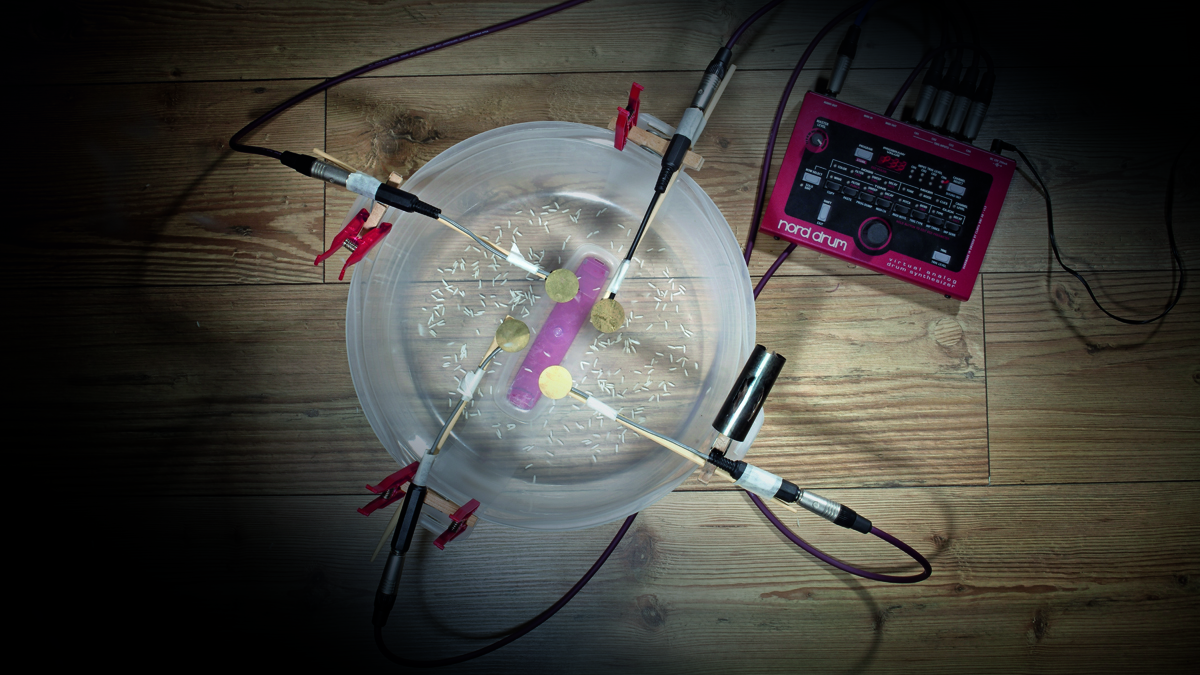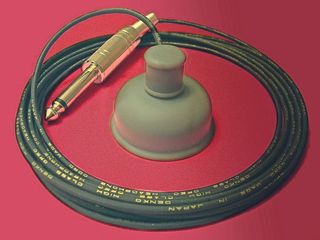9 ways to use piezo mics in your music making
Encounter new sounds with some experimentation and good old-fashioned electronics

Piezo conducers have been around for years. They tend to be the things that make the 'done' beep in a microwave or the buzz of an alarm clock.
Piezos and contact mics have been used extensively by experimental music composers, noise music artists and foley artists and lend themselves to some enjoyable audio experimentation for relatively little cost or electronics know-how.
If you are about to embark on some low-cost sonic exploration yourself, then you might want to take some of these pointers with you.
Read them, transpose them to post-it notes to adorn your workshop wall and get experimenting.
1. Quick fix
For permanent fixing, soldering or glue is perfect; but for a temporary attachment use gaffer tape, double-sided tape or decorating masking tape (this has the advantage of being able to write on it). Make sure the piezo is firmly attached with as much surface area contact as possible. Also be careful not to mark anything valuable you stick it on.
2. Record out and about
The portability of contact mics (and the lack of need for external power) means that, paired with a mobile recorder, there's a whole world of odd sounds outside the front door to explore - filing cabinets, bats/racquets, drain piping, fence railings, hollow logs, vehicles (inside and out). Attach contact mics to the outside of bins or buckets and fill with water, sand or pebbles. Water butts and tanks (plastic or metal) make great bass drum/kettle drum percussion sources. Think big: garage doors, tin roofs, skips, bottle banks, scaffold poles (hit, scraped, wobbled) and sheets of metal all await a piezo and some tape.
3. Hot piezo
The simple piezo to jack socket set-up will favour high frequencies rather than low (much like a high-pass filter). Running the piezo through a decent preamp (most pro piezo set-ups use an impedance balanced preamp) will help, as will some careful EQ. Start low and work up, just to be on the safe side.
Get the MusicRadar Newsletter
Want all the hottest music and gear news, reviews, deals, features and more, direct to your inbox? Sign up here.
4. Make modular contact mics
If you are into modular synths, specifically Eurorack, there's a DIY contact mic module kit by Tom Whitwell from Music Thing Modular called the Mikrophonie. Consisting of both a fixed piezo behind a textured front plate (great for rubbing/tapping) and a handy amplified input for connecting external contact mics, the module is great for bringing in new sounds and textures to process or creating some very unique CV signals to control other modules. Although not a total beginner build, it is quite straightforward and a great way to bring piezo fun into the modular world. Buy it at Thonk.
5. Good vibrations
One of the real joys of using contact mics is the scope for experimentation but remember contact mics need surface vibrations: anything that shakes, twangs, rattles, resonates or vibrates is fair game.

6. Make a hydrophone
A relative of the piezo contact mic is the hydrophone, used to pick up vibrations under water. Simple hydrophones are made in the same way as our contact mic but are then covered in a waterproof coating. A liquid rubber or plastic solution like Plastidip works well - two or three coats is enough as it deadens the sensitivity of the piezo. Epoxy resin (the kind that dries hard) is another alternative. They are handy for small scale water noise, bubbles and odd high-end sizzles. Also try freezing the hydrophone in a cup of water then recording the thawing process, and of course flush it down the loo (holding the lead firmly!)
7. Experiment with processing
Sometimes the results are hit and miss; not everything will sound interesting. Sometimes the most unlikely sound sources really come into their own when processed or layered, so spend a bit of time with them.
8. Use and abuse everyday objects
Outside of the studio there is a world of props to have fun with - washing up bowls, plastic tubs, pots, pans, roasting trays, grill pans, boxes, tins, rubber bands, Pringles tubes, and ice cubes (try dropping them in warm or fizzy liquid with a contact mic on the cup). Marbles are a firm personal favourite, whether rolling along a wooden floor, in the bath or thrown into a bowl or container. Also good fun is to vibrate a ruler off the edge of a table or metal surface: the more ruler over the edge, the deeper the pitch. Try to find a stable pitch (or force a sample into pitch via software) and stretch it over an octave via your sampler.
9. Alternatives to doing it yourself
If you don't fancy having a go yourself or want something more sophisticated, there are plenty of commercially available alternatives out there. These range from cheaper Chinese units on eBay, to more standard acoustic guitar pick-ups (found in most music stores). Some of the commercial contact mics feature a built-in clip (like the Korg CM-200) which makes quick, non-permanent, connection to the sound source very easy.
There are also plenty of small manufacturers offering contact mics geared towards field recording and sound design (try Cold Gold or JRF). Often these will include hydrophones if you fancy getting into some water-based recording.
At the top end of the market are mics geared towards classical music recording. These guitar, piano or violin contact mics often include an impedance matched preamp for the very best sound quality. Try Trance Audio and Barcus Berry.
For much more on the subject of piezo mics, pick up Future Music 295, which is available in both digital and print formats now.
Future Music is the number one magazine for today's producers. Packed with technique and technology we'll help you make great new music. All-access artist interviews, in-depth gear reviews, essential production tutorials and much more. Every marvellous monthly edition features reliable reviews of the latest and greatest hardware and software technology and techniques, unparalleled advice, in-depth interviews, sensational free samples and so much more to improve the experience and outcome of your music-making.

"If I wasn't recording albums every month, multiple albums, and I wasn't playing on everyone's songs, I wouldn't need any of this”: Travis Barker reveals his production tricks and gear in a new studio tour

“My management and agent have always tried to cover my back on the road”: Neil Young just axed premium gig tickets following advice from The Cure’s Robert Smith











